11 Security and Safety tricks before leaving for a long travel
Most of the travel security and safety tricks that will follow may seem paranoic or useless to you.
The thing about negative or catastrophic events that may happen is that we always tend to think that those will happen to other people and not to you!!
Also, remember that in such situation most people are panicking and tend to lose lucidity (included memory recovering), those small forward thinking and preparation tricks will surely help you.

I found myself involved in dramatic situations many times in my life, unfortunately. My forward thinking abilities and preparation always helped me or literally saved my ass. E.g. I had to run for my life from after a Tsunami alarm. Scanning the territory when just arrived on the island participated in saving my life and run to the right place.
Maybe you are right, statistics may be on your side… but what if not? What is the price to pay? And, above all, what does it take to reduce the likelihood that those negative events happen to you?
I tell you this.
It’s important to “live your trip” and go with the flow, but with an eye on the environment, you will be more covered. Spending a few your cognitive efforts on individuating threads, exit ways, possible scenarios to save your life, sometimes can make the difference between life and death. We are talking about your life and your death.
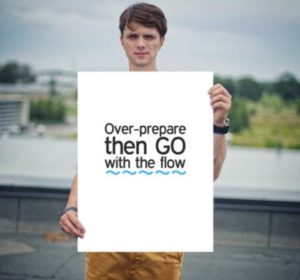
It’s the same thing with carefully preparing your travel before leaving. What it takes is just a few boxes spent to buy the right equipment and a bit of time spent preparing your stuff.
That’s it.
So, just do it and chances are that you will be covered for your entire stay 🙂
1) Bring with you a watch with the basic functions
I know, most people would argue that smartphones have nowadays most of the functionalities that a normal wrist watch have.
Nevertheless, for the following reasons, I advise you to bring an old-style wrist watch (iWatch not included :)).
- the basic things are set/done faster with the push of a button
- it’s always on your wrist, anything you need is immediately there, without having to look for an object in your pockets
- it’s cheaper
- it doesn’t break or get stolen
- battery basically last forever
- Basic functions I recommend: hour & calendar (date, day), alarm clock, compass, rain forecast (pressure), altitude, night illumination, waterproof, anti-scratch screen, (timer).
I found that this Casio model completely fulfil my needs and it’s not so expensive.
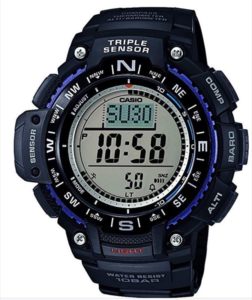
2) Carry with you one or more hidden wallets
Of course, you can hide your money on your underwear or on your socks :)… but nowadays there are better and more efficient ways to do that!
It’s practical to have a neck hidden wallet like this one (RFID blocking) or even an under-armpit one like this model from Tatonka.
This should be your main wallet, holding about 70-80% of your cash, the major CCs you brought with you and your passport. This way it’s always touching your body and under control.

I also bring with me a hidden wallet on my belt, where I can store a few dollars in case I would need them.
Also, don’t forget to bring a low-quality wallet for your needed daily money. So, if you are robbed you can easily give that away without losing anything valuable.
All of that represents the solution when you are on the go. Better to store most of the cash, CC and passport inside the hotel or hostel safe. So, you just go around with one CC, a few daily cash and your passport’s photocopy within your low-quality wallet.
3) Cover your passport
From the cover of your passport, it’s easy to get your nationality. I advise you to purchase this standard cover to hide personal info. I personally don’t put any card on it, but you can do so without any problems if you want as it’s equipped with RFID blocking material.
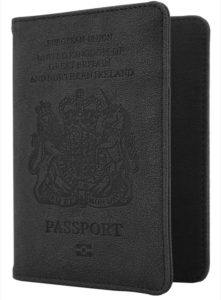
4) Subscribe yourself to natural-disaster alerting authorities
Subscribe yourself by email to an automatic earthquake notification system. It’s free and very practical. Almost in real time, you get an email with the earthquake magnitude and location, so you can act on time if involve the region where you are currently living.
5) Subscribe yourself to your national foreign affair department
This is to be able for them to know that you are in such country in the case a natural disaster happens. This would allow them to search for you and possibly send someone picking you up (depending on how much your government care about you :)).
Maybe it’s a completely useless task… but it’s free and very easy to do. Luckily, I live in a country where this is happening 🙂
6) Take a photo of your wallet’s content
This is in the case you lose your wallet or it gets stolen, you will know exactly its content and you will be able to act (e.g. you immediately know which cards to block).
Depending on where the photo will be stored, you may obscure personal info of the picture you have taken with Photoshop or similar (e.g. CC numbers, info on documents,…).
Quick important advice: store this photo in your online-accessible encrypted storage. Read this article I wrote if you wanna read more about digital privacy protecting tricks when you travel click here.
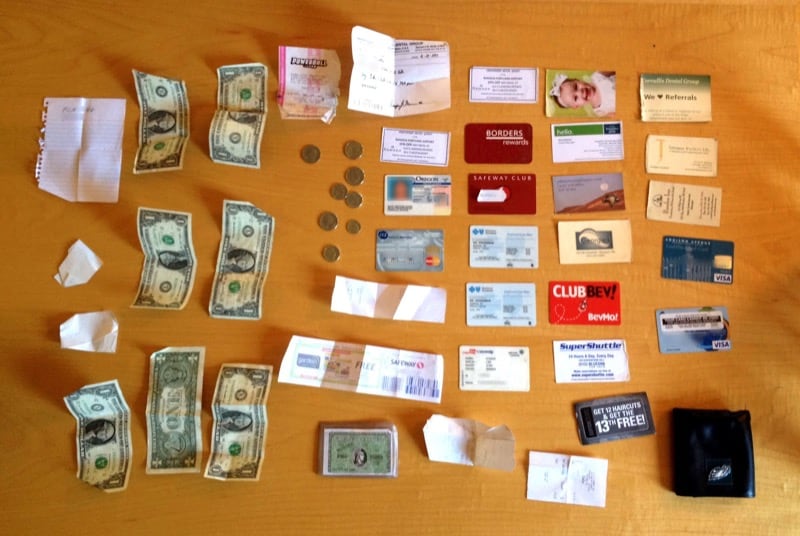
7) Save your most important phone numbers
Save all of the needed local numbers (police, ambulance, tourist police…) and personal numbers (your insurance, your bank, your CC provider,…) in the memory of your phone already. So, in case of need, you just have to push one button to reach out to them. Remember: the more you prepare before a possible dramatic event happen, the easier your life will be after it happens 🙂
Also, I advise you to write down those numbers in a small sheet (5 cm x 10 cm) that you always carry with you in your wallet. So that info is in a second place that is not your phone (e.g. not dependent on your phone battery). Don’t forget to coat that sheet with plastic, so to make it waterproof.
8) Make a sheet with your CC providers’ fees
If you are like me, you don’t trust your bank and CC institution. In the last decades, they demonstrated being institutions that want to rule individuals and walk over them rather than offering a service and really care about their clients’ money. So, chances are that you have many banks and CC providers or institutions.
So, probably you have many CC that you carry with you on your long-term travel (and it’s better for you that you do so). You will have then different fees and % that they charge you for different actions with your CC (e.g. charging them, purchase online, withdrawal from ATM, etc).
I advise you to write all of those fees on a small sheet that you will then coat and make waterproof. I do this on the back of the just above-mentioned point’s sheet. This way you will be covered when you need to face the decision (and if you travel long term this is likely to happen) if exchange your currency, withdrawal from a specific ATM or from a specific card. The difference may be small or even big (e.g. some cards may charge you even 5% if you withdraw from specific ATM or in a specific currency. Better to be aware of this rather than having wrong surprises.
9) Cover your expensive brands’ logos
Nobody thinks about that… if you carry with you an expensive Nikon or your MAC laptop, maybe it’s better for you to cover them.
Those apparels are normally super expensive. People with bad intentions around the world (and home) may be just looking for tourists with such apparels to rob. Better to leave them with doubt and abandon the plan instead of inviting them to rob you and sell your valuable equipment.
I normally use a piece of normal black electrician tape to cover Nikon’s logos on my camera. For my 13 inches MAC laptop I use such leather PU hard shell.
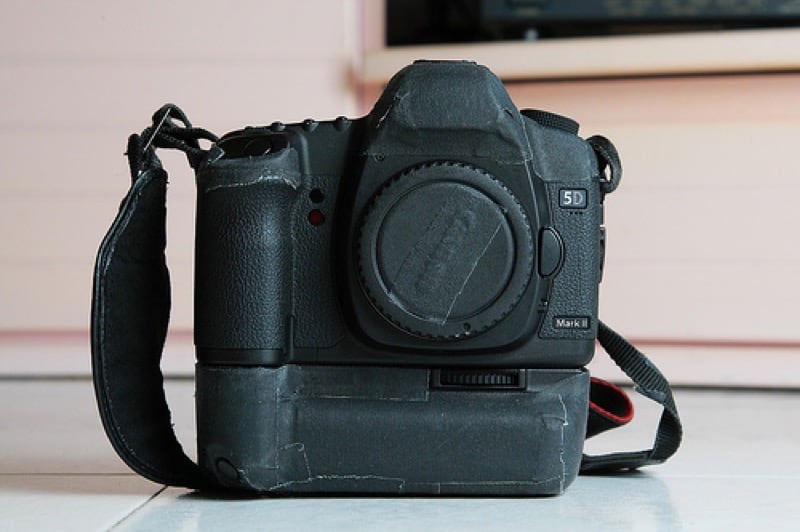
10) Bring with you an emergency kit
The kit can be contained in one of those travel transparent plastic pockets. I personally inserted the following content but it may vary depending on your trip:
- Spare batteries AAA and AA (tape those to avoid poles contact)
- A cheap mini torch like this one
- Tiny screwdrivers set (e.g. to quickly fix something inside your notebook on the go)
- mini sewing kit that you can buy here, build yourself or take from a 1-night stay in a luxury hotel :))
- 10 meters rolled string (e.g. to hang your clothes to dry)
- a fire starter (lighter won’t pass airport security checks)
- a Lifestraw, which, trust me, is probably one of the most important objects that you can carry with you, regardless of the kind of trip you are heading to 🙂
- some rubber bands
- some paper clips
- some plastic bands
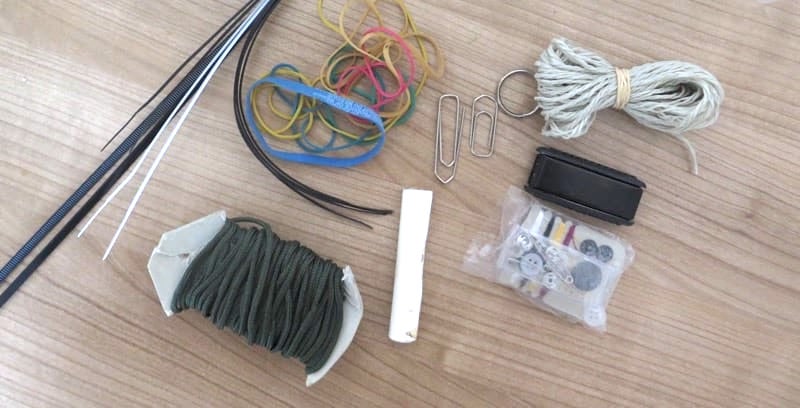
11) Don’t put your personal info on luggage labels
Ok, if you check your luggage (ie. hold baggage), then you probably need to put your info on it. I am more referring to your carry on luggage (ie. hand baggage). Considering that that baggage is always with you, putting a label doesn’t make any sense. Also, after you pick your baggage from the carousel at the airport, you don’t need that label anymore and it’s better for you to destroy it.
This is because some very personal information sits on it and can be read by anyone passing by. You don’t want every person throwing a gaze to your backpack to know your surname and address isn’t?
I hope this list helped you in some way. Talk to you soon 🙂
